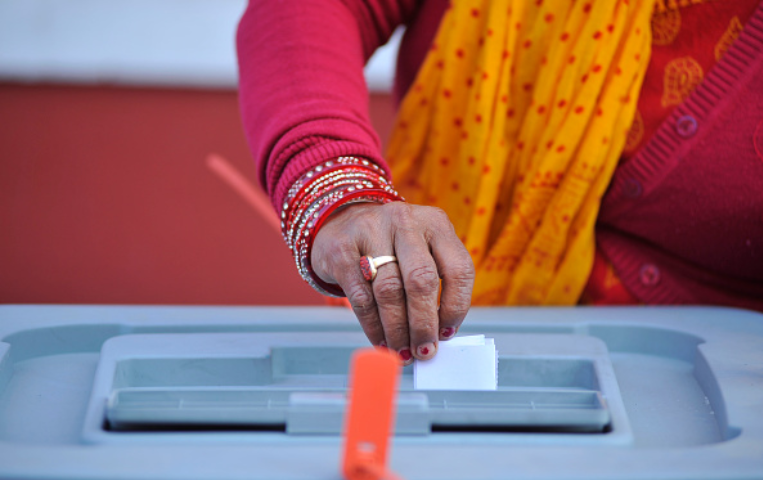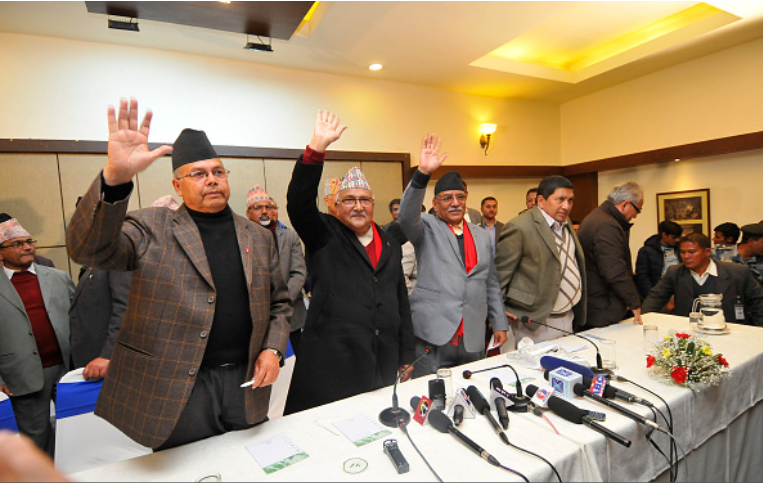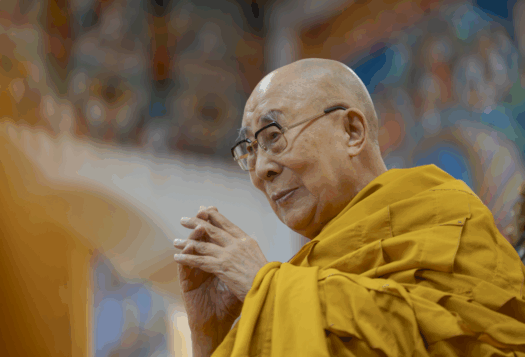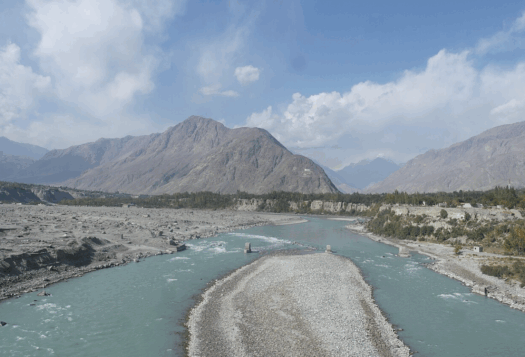
The year 2017 has been momentous in terms of Nepal’s internal politics. For the first time since the end of Nepal’s civil war, local elections took place followed by federal and provincial elections. The latter set of elections, which began on November 26 and ended on December 7, marked the first of their kind in over two decades. All three levels of elections enjoyed high voter turnout with 77 percent of the population participating in local elections and 67 percent in the federal and provincial polls. This historic moment thus represents the biggest domestic as well as international event in Nepal in 2017. This article reviews the importance of the elections and their potential impact on Nepal’s foreign relations with its neighbors, particularly India and China.
Local Elections
The local elections in Nepal were conducted in three phases over May, June, and September in seven provinces. This election model represents a key transition for Nepal from a unitary to federal state. It was also the first step in implementing the 2015 constitution, which envisioned a government formed in three tiers: federal, provincial, and local. At a very basic level, the return of elections after 20 years of conflict signals the return of democratic exercise in which people elect representatives to various local bodies.
The proper functioning of local bodies like Village Development Committees, municipalities, and district Development Committees requires that local residents serve as representatives rather than bureaucrats and government employees. Since 2002, bureaucrat-control of local governance impaired the smooth functioning of these bodies and excluded citizens from the decisionmaking process.
Local elections were also crucial in addressing political marginalization in Nepal. For example, the 2015 constitution mandated that each political party must nominate at least one woman for a “head” or “deputy head” position in the communal council and at least one Dalit (lower caste individual) or other individual from a minority community as a member of the ward in the municipality or village development committee. These provisions have helped promote women’s participation and the inclusion in all parts of society in their own governance.
Federal and Provincial Elections
After the successful completion of the local elections, the country geared up for federal and provincial elections in November. The formation of a surprise “left alliance” dominated the national and international headlines during this time. The left alliance consisted of a coalition of two left-wing political parties: the Communist Party of Nepal-Unified Marxist-Leninist (CPN-UML) led by K.P. Oli and the Maoist Centre (MC) led by Pushpa Kamal Dahal or “Prachanda.” The Maoist Centre abruptly ditched their erstwhile coalition partner, the Nepali Congress (NC), to join the UML.
Since the overthrow of the monarchy in 2008, the willingness of the political class to make or break alliances to secure office has caused great instability in Nepal. From 2006 to 2017, for example, Nepal went through eight prime ministers. Now with the formation of a left alliance, these splinter groups have diminished bargaining power as fence-sitters, clearing the way for a more stable government able to serve out its full five-year term.

While the formation of the left alliance was primarily driven by electoral logic, rhetoric related to the ideological proximity of the two parties acted as a unifying smokescreen. The left alliance won a two-thirds majority of parliament over the NC in the first-past-the-post system now used in federal and provincial elections. This overwhelming victory was aided, in large part, by the reluctance of the CPN-UML party to bow down to India during the unofficial Indian blockade of Nepal in 2015 and CPN-UML’s populist message that no outside parties should interfere in Nepal’s internal affairs. This rhetoric likely attracted a large voter base among those who were fed up with India trying to micro-manage Nepal.
The Left Alliance and Nepal’s neighbors
The victory of the left alliance sent shock waves across Nepal’s neighborhood as well. While both China and India seemed stunned by the turn of events, India was more rattled by the result. While China maintained that the left alliance was an internal matter, the Chinese media has welcomed the election result and are hopeful the new government in Kathmandu will improve economic cooperation between Nepal and China.
Indian commentators found it hard to accept the merger of Nepal’s leftist parties, with some in the political establishment depicting the left alliance as a Chinese Communist Party plot. These concerns stem from the fact that India’s influence in Nepal may be shrinking as the country increasingly falls into Beijing’s orbit. Although the leaders of the left alliance have said they would maintain equidistant relations with both countries, how the relationship actually unfolds remains to be seen.
Since the left alliance has made economic development and prosperity their main agenda, relations with China may prove particularly important in the years ahead. For example, Nepal is an important part of China’s ambitious Belt and Road Initiative (BRI). Under BRI, China has invested in hydropower projects, an international airport, special economic zones, and railway infrastructure projects. India, on the other hand, has been unable to finish several infrastructure projects on time.
Conclusion
In sum, 2017 marked a historically significant departure from a unitary system of government to a federal structure in Nepal. The new federal structure will hopefully bring an end to the age-old dependence on Kathmandu and Singha Durbar for all matters of governance and development in Nepal. On the regional front, 2017 was an important year in charting out the trajectory of Nepal’s relations with China and India. As both Asian giants vie for greater influence in South Asia, Nepal may increasingly find itself in the economic and geopolitical crosshairs.
Editor’s note: This is the sixth and final piece in our 2017: Year in Review series. In this six-part series, our contributors assess the most significant domestic and foreign policy developments in Afghanistan, Pakistan, Bangladesh, India, Sri Lanka, and Nepal in 2017 and how these developments will impact the countries and the region in 2018. Read the entire series here.
***
Image 1: NurPhoto via Getty Images.
Image 2: Narayan Maharjan via Getty Images.


